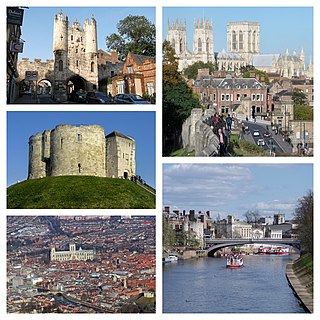
York is a cathedral city in North Yorkshire, England, with Roman origins, sited at the confluence of the rivers Ouse and Foss. It is the county town of Yorkshire. The city has many historic buildings and other structures, such as a minster, castle, and city walls. It is the largest settlement and the administrative centre of the wider City of York district.

York Minster, formally the "Cathedral and Metropolitical Church of Saint Peter in York", is an Anglican cathedral in the city of York, North Yorkshire, England. The minster is the seat of the archbishop of York, the third-highest office of the Church of England, and is the mother church for the diocese of York and the province of York. It is administered by its dean and chapter. The minster is a Grade I listed building and a scheduled monument.

William Melton was the 43rd Archbishop of York (1317–1340) and the first Lord Privy Seal.
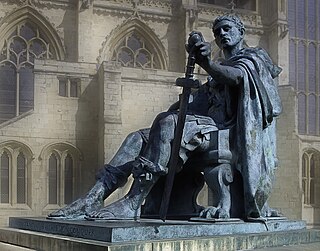
Eboracum was a fort and later a city in the Roman province of Britannia. In its prime it was the largest town in northern Britain and a provincial capital. The site remained occupied after the decline of the Western Roman Empire and ultimately developed into the present-day city of York, in North Yorkshire, England.

There are nine bridges across the River Ouse and eighteen smaller bridges and passages across the narrower River Foss within the city of York, England.

The history of York, England, as a city dates to the beginning of the first millennium AD but archaeological evidence for the presence of people in the region of York dates back much further to between 8000 and 7000 BC. As York was a town in Roman times, its Celtic name is recorded in Roman sources ; after 400, Angles took over the area and adapted the name by folk etymology to Old English Eoforwīc or Eoforīc, which means "wild-boar town" or "rich in wild-boar". The Vikings, who took over the area later, in turn adapted the name by folk etymology to Norse Jórvík meaning "wild-boar bay", 'jór' being a contraction of the Old Norse word for wild boar, 'jǫfurr'. The modern Welsh name is Efrog.

The York Football League is a football competition based in North Yorkshire, England, founded in 1897. Currently it is known under the terms of a sponsorship agreement as the York Minster Engineering Football League. It is affiliated to the North Riding County Football Association, and the Premier Division sits at level 11 in the English football pyramid.
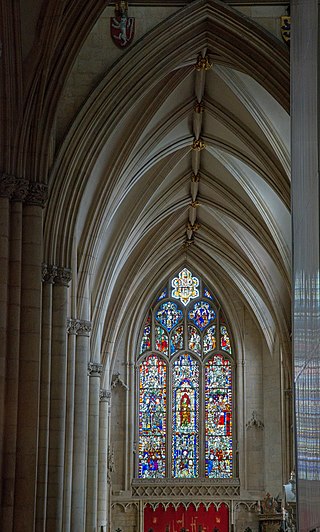
Religion in York can be traced back to the City's foundation in Roman times with evidence of York's first Christian community dating from this period.
Events from the 1220s in England.
Events from the 1130s in England.
Events from the 1070s in England.
Events from the 1060s in England.
Events from the 10th century in the Kingdom of England.
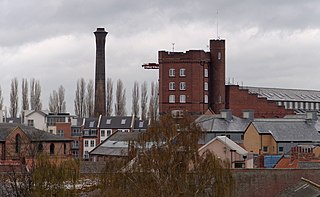
Layerthorpe is a part of the city of York in, North Yorkshire, England. It is outside the city walls of York. The road through Layerthorpe from the bridge over the River Foss to Heworth is also shares the same name.
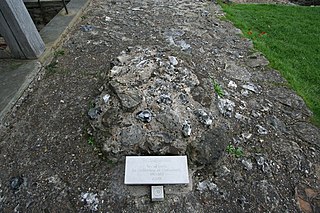
Events from the 7th century in England.
The following is a timeline of the history of the city of Kingston upon Hull, East Riding of Yorkshire, England.

The following is a timeline of the history of the city of Lincoln, the county town of Lincolnshire in the East Midlands of England.

Walmgate is a street in the city centre of York, in England. During the Medieval period, the street was the site of a seafish and cattle market. Walmgate Bar was involved in the Siege of York in 1644, during the First English Civil War. During the 20th century, many of the older buildings were cleared away and newer structures put up.

Monkgate is a street in York, North Yorkshire, running north-east from the city centre.
Herman Gabriel Ramm was an archaeologist.













